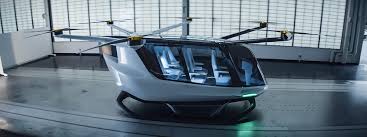
Breaking News
 BREAKING: Federal Agents Descend on Suspected Somali Fraud Sites in Minneapolis (VIDEO)
BREAKING: Federal Agents Descend on Suspected Somali Fraud Sites in Minneapolis (VIDEO)
 BREAKING: Federal Agents Descend on Suspected Somali Fraud Sites in Minneapolis (VIDEO)
BREAKING: Federal Agents Descend on Suspected Somali Fraud Sites in Minneapolis (VIDEO)
 Aargh! Letters of marque would unleash Blackbeard on the cartels
Aargh! Letters of marque would unleash Blackbeard on the cartels
 How a Barter System Could Sustain Communities During a Supply Chain Collapse
How a Barter System Could Sustain Communities During a Supply Chain Collapse
Top Tech News
 EngineAI T800: Born to Disrupt! #EngineAI #robotics #newtechnology #newproduct
EngineAI T800: Born to Disrupt! #EngineAI #robotics #newtechnology #newproduct
 This Silicon Anode Breakthrough Could Mark A Turning Point For EV Batteries [Update]
This Silicon Anode Breakthrough Could Mark A Turning Point For EV Batteries [Update]
 Travel gadget promises to dry and iron your clothes – totally hands-free
Travel gadget promises to dry and iron your clothes – totally hands-free
 Perfect Aircrete, Kitchen Ingredients.
Perfect Aircrete, Kitchen Ingredients.
 Futuristic pixel-raising display lets you feel what's onscreen
Futuristic pixel-raising display lets you feel what's onscreen
 Cutting-Edge Facility Generates Pure Water and Hydrogen Fuel from Seawater for Mere Pennies
Cutting-Edge Facility Generates Pure Water and Hydrogen Fuel from Seawater for Mere Pennies
 This tiny dev board is packed with features for ambitious makers
This tiny dev board is packed with features for ambitious makers
 Scientists Discover Gel to Regrow Tooth Enamel
Scientists Discover Gel to Regrow Tooth Enamel
 Vitamin C and Dandelion Root Killing Cancer Cells -- as Former CDC Director Calls for COVID-19...
Vitamin C and Dandelion Root Killing Cancer Cells -- as Former CDC Director Calls for COVID-19...
 Galactic Brain: US firm plans space-based data centers, power grid to challenge China
Galactic Brain: US firm plans space-based data centers, power grid to challenge China
Skai hydrogen-powered eVTOL air taxi boasts enormous 400-mile

Alaka'i Technologies' Skai machine has a range of up to four hours/400 mi (640 km) and a five-passenger capacity.
Hydrogen is a difficult fuel to deal with in an automotive context, but it might just be the shot in the arm that the electric aviation industry needs to get VTOL multicopter air taxis up and running. Current lithium battery technology offers poor energy density, which severely limits the range figures of current e-VTOL projects. But hydrogen offers up to 10 times the energy density, as well as gasoline-quick refueling, if you can deal with the inefficiencies of producing, transporting and storing it. And those difficulties can be better managed in a centralized aviation model that doesn't need to roll out across the entire road network.
Thus, Massachusetts-based Alaka'i Technologies has spent the last four years beavering away at building a hydrogen-powered air taxi, which it launched today in California. According to an interview with SoCalTech, the company is operating under the funding of a sole investor, who has carried it through design, development, prototyping and is now footing the bill for FAA certification, which Alaka'i CEO Steve Hanvey says he believes should be possible before the end of 2020 due to the simplicity of the airframe.



